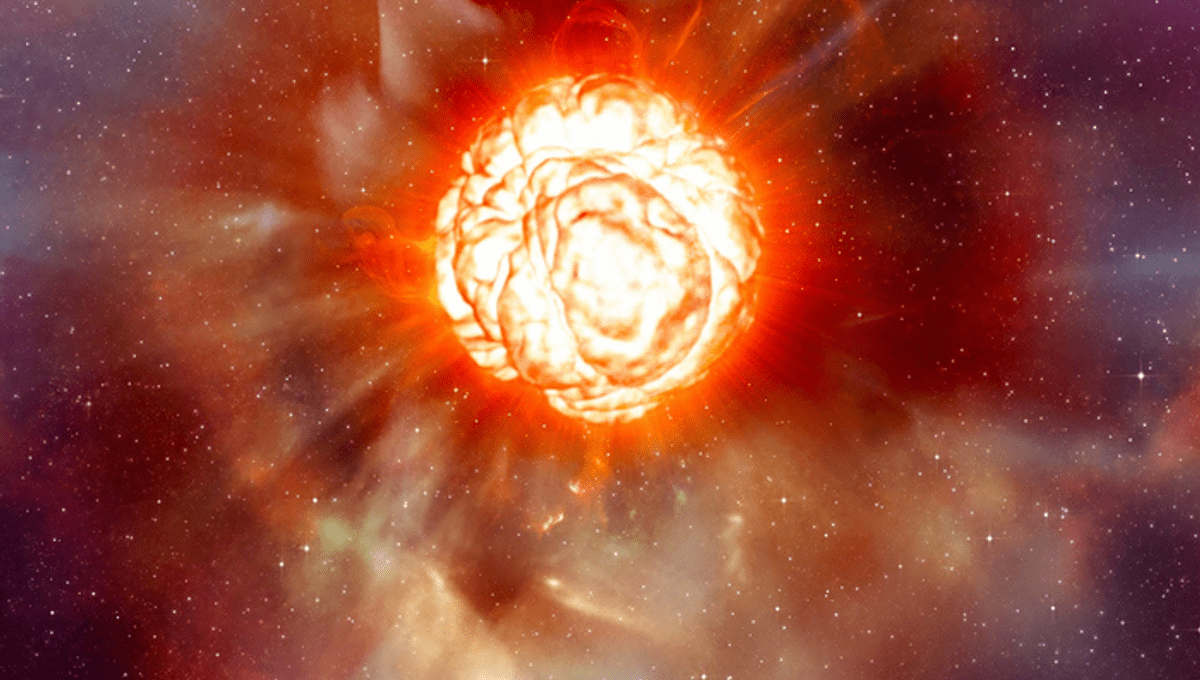
Very massive stars spend only a small portion of their lifecycle as red supergiants before becoming supernovas. What may be an astronomical blink of the eye, however, is still hundreds of thousands of years, so the process of closely watching every star in the red supergiant phase is not practical. However, new evidence of a convenient warning period before the explosion could provide astronomers with an opportunity to tune in and watch just in time.
When Betelgeuse dimmed dramatically in 2019-20 many people couldn’t shake the hope it was a prelude to a front-row seat at a supernova watch party. Not only was that not true, but subsequent research indicates we have about 100,000 years to wait for our nearest red supergiant to do its thing.
Nevertheless, a new paper provides evidence drastic dimming can indeed be an indication of a forthcoming explosion, and something we can watch out for. Keeping track of more distant red supergiants is harder than watching what is usually the tenth brightest star in the sky. Nevertheless, the paper makes the case that stars on the verge of exploding give us signals strong enough to spot well outside our galaxy.
Betelgeuse lost two-thirds of its brightness during its dimming before recovering. According to Dr Benjamin Davies of Liverpool John Moores University, for pre-supernova red supergiants, 99 percent is more typical.
It’s not that the stars in question are putting out that much less light at the time. Instead, the initial radiation we see from supernovas shows signs of having passed through a cocoon, which would have blocked most of the predecessor star’s light.
“The dense material almost completely obscures the star, making it 100 times fainter in the visible part of the spectrum. This means that the day before the star explodes, you likely wouldn’t be able to see it was there,” Davies said in a statement.
If stars became invisible decades before their explosions it would be as frustrating as if they showed no signs until immediately before the big event. Fortunately, neither seems to be the case. Having looked through archival images of galaxies where supernovas have recently occurred, the team found red supergiants bright enough to stand out a year or so before their explosions.
Davies and co-authors modeled two competing cocoon-forming processes others have proposed. They found the “Outburst model” where the bulk of the cocoon comes from the throwing off of a tenth of the Sun’s mass in the space of about a year is consistent with the majority of cases we have seen. “Superwind models”, where mass loss is a hundred times slower and takes place over decades, is not.
“Until now, we’ve only been able to get detailed observations of supernovae hours after they’ve already happened. With this early-warning system we can get ready to observe them in real-time,” Davies said. “To point the world’s best telescopes at the precursor stars, and watch them getting literally ripped apart in front of our eyes.”
A red supergiant goes supernova in a galaxy the size of the Milky Way less than once a century. However, these stars are so bright – easily 10,000 times as luminous as the Sun – a survey of galaxies within 100 million light-years should pick up a sample, and astronomers can check regularly for signs of pre-explosion dimming.
The paper is open access at Monthly Notices of the Royal Astronomical Society.
Source Link: Supergiant Stars Wave Red Flags Months Before They Go Supernova